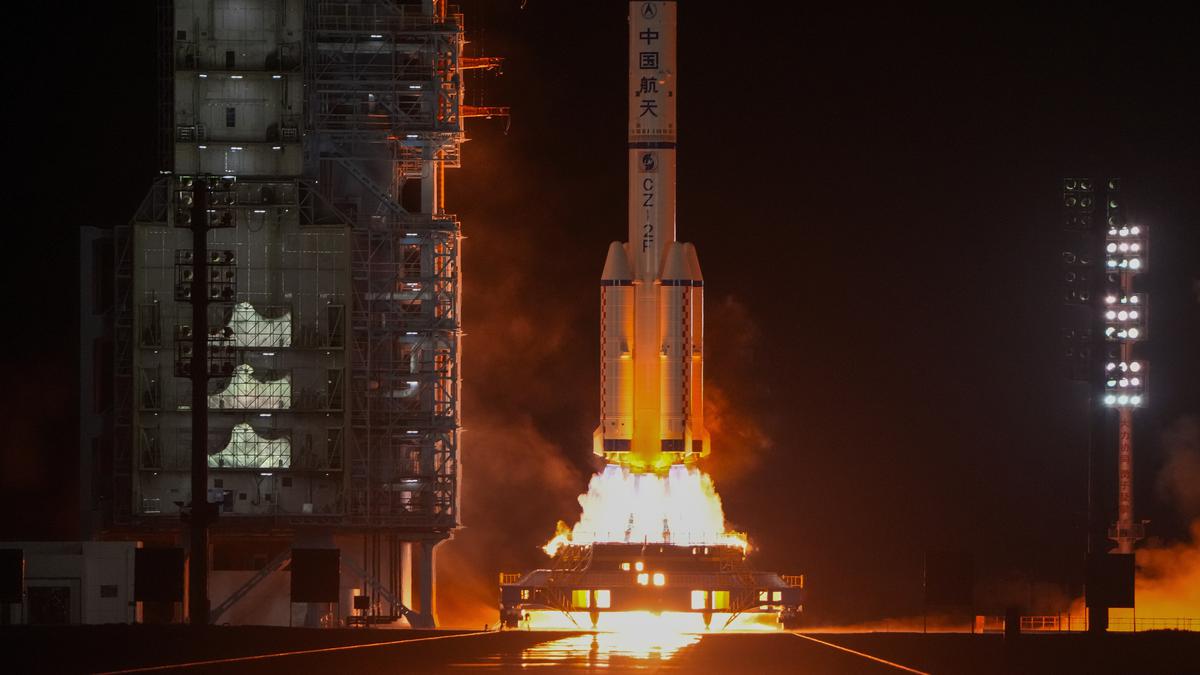China launched a three-member crew to its orbiting space station on April 25 as part of its ambitious program that aims to put astronauts on the moon by 2030.
The Shenzhou-18 spacecraft lifted off from the Jiuquan Satellite Launch Center on the edge of the Gobi Desert in northwestern China atop a Long March 2-F rocket at 8:59 p.m. (1259 GMT).
The spacecraft’s three-member crew will relieve the Shenzhou-17 team, which has been staffing China’s Tiangong space station since last October.
The China Manned Space Agency, or CMSA, held a send-off ceremony — complete with flag-waving children and patriotic music — for the Shenzhou-18 crew earlier on Thursday, as the three astronauts prepared to enter the spacecraft.
The trio is made of Commander Ye Guangfu, 43, a veteran astronaut who took part in the Shenzhou-13 mission in 2021, and fighter pilots Li Cong, 34, and Li Guangsu, 36, who are spaceflight rookies.
They are expected to reach the space station about six-and-a-half hours after liftoff.
China built its own space station after being excluded from the International Space Station, largely because of U.S. concerns over the Chinese military’s involvement in the program. This year, the Chinese station is slated for two cargo spacecraft missions and two manned spaceflight missions.
The Shenzhou-18 crew will spend about six months on the space station. They will conduct scientific tests, install space debris protection equipment on the station, carry out payload experiments, and popularize science education, among other things, according to Lin Xiqiang, deputy director of the CMSA.
Lin also said China was working toward eventually offering access to its space station to foreign astronauts and space tourists.
“We will accelerate the research and promotion of the participation of foreign astronauts and space tourists on flights on China’s space station,” he said in a press conference Wednesday.
The country is planning a mission to bring back samples from Mars around 2030 and three lunar probe missions over the next four years. It also wants to put astronauts on the moon by 2030.
China conducted its first crewed space mission in 2003, becoming the third country after the former Soviet Union and the U.S. to put a person into space using its own resources.
The U.S. space program is believed to still hold a significant edge over China’s due to its spending, supply chains and capabilities. However, China has broken out in some areas, bringing samples back from the lunar surface for the first time in decades and landing a rover on the less explored far side of the moon.
The U.S. aims to put a crew back on the lunar surface by the end of 2025 as part of a renewed commitment to crewed missions, aided by private sector players such as SpaceX and Blue Origin.




